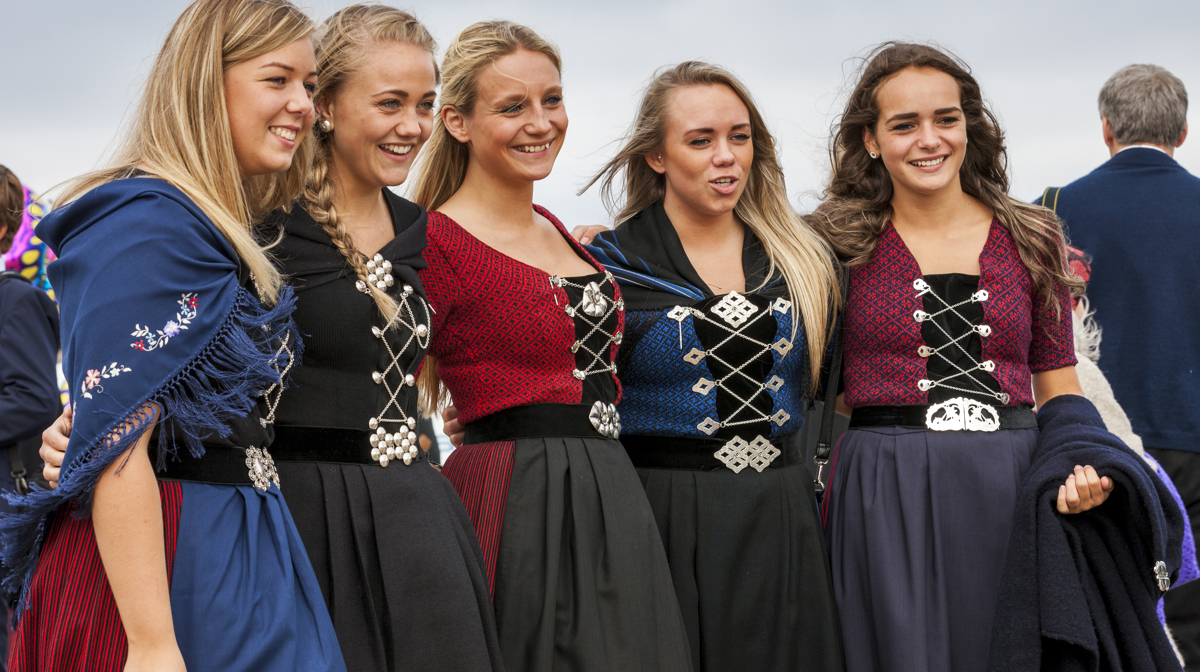The Faroese national dress is based on a combination of finer traditional items of clothing, made from resources available on the islands.
With increasing access to imported clothing in the Faroe Islands, a distinction developed between “Faroese” and “foreign” clothing and by the 18th century, the more delicate “Faroese” clothing was very rarely used.
As dedication to the national movement grew in the late 19th century, so did the passion for the Faroese language and cultural heritage.
The delicately handcrafted traditional Faroese clothing was once again put to use, and today these clothes are our national dress. They are a tradition proudly worn on the national holiday, Ólavsøka (St. Olaf’s Wake) and other special occasions, such as weddings.
The Faroese national dress is also often used during the traditional Faroese chain dance.
Men wear a plain white shirt, under a waistcoat, made from fine wool. The waistcoats come in many colours and they have intricate embroidered patterns and silver buttons on the front.
This is topped with a knitted open sweater with silver buttons. Black woollen knee-length pants are coupled with long knitted socks and a braided ribbon, which usually match the colours of the waistcoat. A large woollen open sweater is used as outerwear and sometimes a red and black hat is used too.
Women wear a tight red and black open sweater. On each side of the sweater, there are four silver buttons, laced together with a silver chain, over a piece of black velvet cloth. The silver buttons come in various designs.
They also wear a red and black ankle length skirt fitted with a black belt, with a silver buckle, matching the buttons. This is topped with a shawl and pinafore, made from either embroidered silk or woollen fabric or woven wool, in various colours.
The shawl is held together with a silver broach in the same design as the buttons and the buckle. A black cape is used as outerwear.
The separate pieces of the Faroese national dress are all made by hand and only the best materials are used in making them.
They are made to fit the individual and can be handed down for generations. However, the intricate weaving and embroidering, the complex knitting patterns and the delicately crafted silver buttons, broaches and buckles, make the process of creating these outfits time consuming and costly.
Lately, there was been a surge of interest in the Faroese national dress. People are not only making the effort to collect items for the traditional outfits, but women are also becoming increasingly creative with the design of their versions of them.
The shawls and pinafores always came in a wide range of colours, but now the shirts and skirts do the same, and the range is wider than ever.
The traditional knitting patterns and shapes of the shirts are evolving and the number of different designs for the silver is steadily growing. When you walk around in the centre of Tórshavn on Ólavsøka, the sheer variety of beautiful designs and vibrant colours is awe inspiring.
